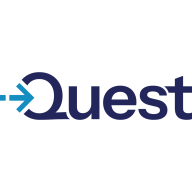

Symantec Client Management Suite and KACE Systems Management Appliance compete in the comprehensive system management solutions category. Symantec seems to have an upper hand in pricing and technical support, while KACE SMA stands out with versatile features.
Features: Symantec Client Management Suite offers automation tools for software deployment, inventory data, and patch management. KACE Systems Management Appliance provides robust asset management, service desk capabilities, and integrated systems management with patch management features.
Ease of Deployment and Customer Service: Symantec's deployment can be challenging; however, it provides substantial support within enterprise environments. KACE SMA simplifies deployment with a straightforward appliance-based approach and effective customer support.
Pricing and ROI: Symantec Client Management Suite tends to have a more competitive setup cost with solid ROI. KACE SMA involves a higher initial investment but delivers significant long-term ROI by streamlining multiple IT processes.
| Product | Market Share (%) |
|---|---|
| Symantec Client Management Suite | 16.4% |
| KACE Systems Management Appliance (SMA) | 8.8% |
| Other | 74.8% |


| Company Size | Count |
|---|---|
| Small Business | 8 |
| Midsize Enterprise | 20 |
| Large Enterprise | 15 |
KACE Systems Management Appliance offers integration capabilities, efficient image deployment, and comprehensive asset management. It supports centralized management across diverse devices and locations, simplifying IT processes and enhancing security.
KACE Systems Management Appliance provides single-pane visibility for endpoint management, mass software deployment, automated patch management, robust scripting, and detailed inventory tracking. It streamlines IT management and improves cyber-security compliance through remote software updates and centralized IT request handling. Despite struggles with scalability and the need for interface improvements, it enables efficient device imaging, script automation, and network management through detailed reporting. Organizations find it effective for software deployment, asset management, and endpoint monitoring, serving thousands of IoT devices and desktops.
What are the key features of KACE Systems Management Appliance?In healthcare, KACE Systems Management Appliance is used for maintaining device compliance and security standards. Educational institutions benefit from its capabilities to manage large numbers of endpoints across campuses. In finance, it aids in strict compliance requirements through automated patch management and detailed reporting. Retail sectors leverage its asset management features to streamline operations across numerous locations.
Symantec Client Management Suite automates time-consuming and redundant tasks for deploying, managing, patching, and securing desktops and laptops so organizations can reduce the cost and effort of managing Windows, Mac, Linux, and virtual desktop environments. Client Management Suite 8.0 brings significant new functionality and enhancements to this already feature rich solution. Before covering what’s new in version 8.0, here’s a quick overview of some of the key capabilities of Client Management Suite.
Symantec Client Management Suite helps reduce the cost of deploying and managing desktops and laptops from a centralized location in your environment. The solution offers OS deployment, configuration, PC “personality” migration, and software deployment across hardware platforms and OS types to reduce end-user downtime and increase IT efficiency through automated, repeatable deployment processes.
Symantec Client Management Suite centralizes and simplifies patch management. With this solution you can detect and repair security vulnerabilities for Windows, Mac, and Linux operating systems as well as Microsoft and over 50 non-Microsoft applications. Patch automation can further streamline the process to ensure patches are applied as quickly as possible. Real- time compliance and detailed reports help ensure smart, fast decisions can be made to keep endpoints protected and maximize productivity.
We monitor all Client Desktop Management reviews to prevent fraudulent reviews and keep review quality high. We do not post reviews by company employees or direct competitors. We validate each review for authenticity via cross-reference with LinkedIn, and personal follow-up with the reviewer when necessary.